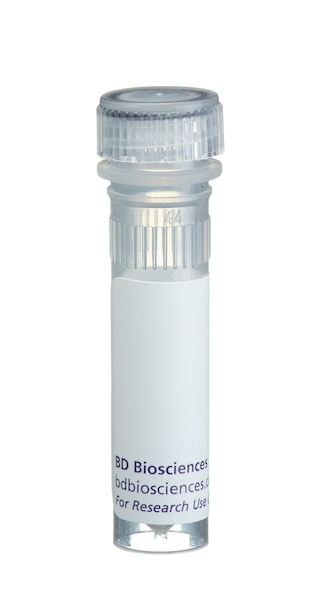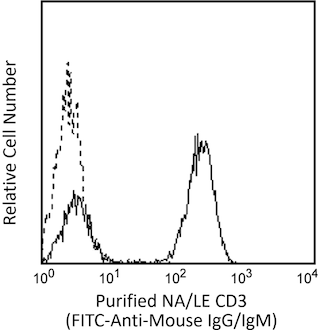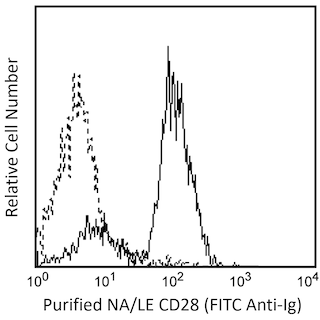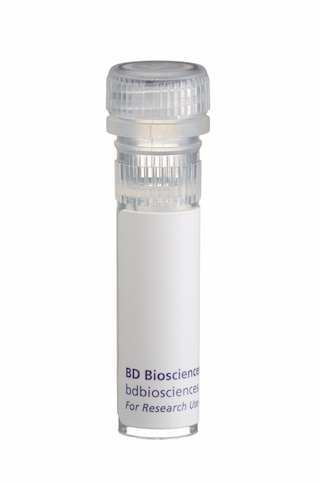-
抗体試薬
- フローサイトメトリー用試薬
-
ウェスタンブロッティング抗体試薬
- イムノアッセイ試薬
-
シングルセル試薬
- BD® AbSeq Assay | シングルセル試薬
- BD Rhapsody™ Accessory Kits | シングルセル試薬
- BD® Single-Cell Multiplexing Kit | シングルセル試薬
- BD Rhapsody™ Targeted mRNA Kits | シングルセル試薬
- BD Rhapsody™ Whole Transcriptome Analysis (WTA) Amplification Kit | シングルセル試薬
- BD Rhapsody™ TCR/BCR Profiling Assays (VDJ Assays) | シングルセル試薬
- BD® OMICS-Guard Sample Preservation Buffer
-
細胞機能評価のための試薬
-
顕微鏡・イメージング用試薬
-
細胞調製・分離試薬
-
- BD® AbSeq Assay | シングルセル試薬
- BD Rhapsody™ Accessory Kits | シングルセル試薬
- BD® Single-Cell Multiplexing Kit | シングルセル試薬
- BD Rhapsody™ Targeted mRNA Kits | シングルセル試薬
- BD Rhapsody™ Whole Transcriptome Analysis (WTA) Amplification Kit | シングルセル試薬
- BD Rhapsody™ TCR/BCR Profiling Assays (VDJ Assays) | シングルセル試薬
- BD® OMICS-Guard Sample Preservation Buffer
- Japan (Japanese)
-
Change country/language
Old Browser
Looks like you're visiting us from {countryName}.
Would you like to stay on the current country site or be switched to your country?


.png)

Two parameter flow cytometric analysis of IL-9 expressed in stimulated human CD4-positive T cells. Human peripheral blood mononuclear cells were stimulated in a tissue culture plate coated with NA/LE Mouse Anti-Human CD3 (Cat. No. 555329; 10 μg/ml, coated overnight at 4°C) and soluble NA/LE Mouse Anti-Human CD28 (Cat. No. 555725; 1 μg/ml) antibodies plus recombinant Human IL-2 (Cat. No. 554603; 10 ng/ml), IL-4 (Cat. No. 554605; 50 ng/ml), and TGF-β (Corning; Cat. No. 354039; 10 ng/ml) proteins and NA/LE Mouse Anti-Human IFN-γ (Cat. No. 554698; 10 μg/ml) antibody for 5 days. The cells were harvested and restimulated with PMA (Sigma P8139; 50 ng/ml) and ionomycin (Sigma I9657; 1 μg/ml) in the presence of BD GolgiStop™ Protein Transport Inhibitor (containing Monensin) (Cat. No. 554724) for 5 hours. The cells were fixed and permeabilized with BD Cytofix/Cytoperm™ Fixation and Permeabilization Solution (Cat. No. 554722). The cells were then washed and stained in BD Perm/Wash™ Buffer (Cat. No. 554723) with either BD Horizon™ PE-CF594 Mouse IgG1, κ Isotype Control (Cat. No. 562292; Left Panel) or BD Horizon PE-CF594 Mouse Anti-Human IL-9 antibody (Cat. No. 564255; Right Panel). Two-parameter flow cytometric contour plots showing the coexpression of IL-9 (or Ig Isotype control staining) versus autofluorescence were derived from gated events with the forward and side light-scatter characteristics of intact lymphocytes. Flow cytometric analysis was performed using a BD LSRFortessa™ Cell Analyzer System.
.png)

BD Horizon™ PE-CF594 Mouse Anti-Human IL-9
.png)
Regulatory Statusの凡例
Any use of products other than the permitted use without the express written authorization of Becton, Dickinson and Company is strictly prohibited.
Preparation and Storage
Product Notices
- This reagent has been pre-diluted for use at the recommended Volume per Test. We typically use 1 × 10^6 cells in a 100-µl experimental sample (a test).
- An isotype control should be used at the same concentration as the antibody of interest.
- Caution: Sodium azide yields highly toxic hydrazoic acid under acidic conditions. Dilute azide compounds in running water before discarding to avoid accumulation of potentially explosive deposits in plumbing.
- Source of all serum proteins is from USDA inspected abattoirs located in the United States.
- Please observe the following precautions: Absorption of visible light can significantly alter the energy transfer occurring in any tandem fluorochrome conjugate; therefore, we recommend that special precautions be taken (such as wrapping vials, tubes, or racks in aluminum foil) to prevent exposure of conjugated reagents, including cells stained with those reagents, to room illumination.
- Because of the broad absorption spectrum of the tandem fluorochrome, extra care must be taken when using multi-laser cytometers, which may directly excite both PE and CF™594.
- When excited by the yellow-green (561-nm) laser, the fluorescence may be brighter than when excited by the blue (488-nm) laser.
- Texas Red is a registered trademark of Molecular Probes, Inc., Eugene, OR.
- CF™ is a trademark of Biotium, Inc.
- This product is provided under an Agreement between BIOTIUM and BD Biosciences. The manufacture, use, sale, offer for sale, or import of this product is subject to one or more patents or pending applications owned or licensed by Biotium, Inc. This product, and only in the amount purchased by buyer, may be used solely for buyer’s own internal research, in a manner consistent with the accompanying product literature. No other right to use, sell or otherwise transfer (a) this product, or (b) its components is hereby granted expressly, by implication or by estoppel. This product is for research use only. Diagnostic uses require a separate license from Biotium, Inc. For information on purchasing a license to this product including for purposes other than research, contact Biotium, Inc., 3159 Corporate Place, Hayward, CA 94545, Tel: (510) 265-1027. Fax: (510) 265-1352. Email: btinfo@biotium.com.
- For fluorochrome spectra and suitable instrument settings, please refer to our Multicolor Flow Cytometry web page at www.bdbiosciences.com/colors.
- Please refer to http://regdocs.bd.com to access safety data sheets (SDS).
- Please refer to www.bdbiosciences.com/us/s/resources for technical protocols.
関連製品


.png?imwidth=320)



The MH9A3 monoclonal antibody specifically binds to human interleukin-9 (IL-9). Human IL-9 is a multifunctional cytokine and a member of the type I cytokine (hematopoietin) family that includes IL-2, IL-4, IL-7, IL-15 and IL-21. This cytokine is encoded by the IL9 gene that is resident on chromosome 5q31.1. IL-9 is expressed by activated CD4-positive T helper cells, by some transformed T cells and by eosinophils, mast cells and neutrophils. IL-9 induces the proliferation, differentiation, and effector function of various cell types including T lymphocytes, B lymphocytes, mast cells, eosinophils, neutrophils, hematopoietic cells and epithelial cells. It potentiates the interleukin-4-induced IgM, IgG and IgE responses by human B lymphocytes. IL-9 has been implicated in human allergic disorders such as asthma and malignancies such as Hodgkin's disease. IL-9 exerts its biological activities through binding to the surface IL-9 receptor (IL-9R) complex comprised of the IL-9R alpha subunit (IL-9Rα; CD129) and the common cytokine receptor gamma subunit (γc; CD132). IL-9 signaling through its receptor includes activation of the Janus kinases 1 and 3 ( JAK1 and JAK3) and activation of Signal transducer and activator of transcription 1, 3 and 5 factors (STAT1, STAT3 and STAT5).
This antibody is conjugated to BD Horizon PE-CF594, which has been developed exclusively by BD Biosciences as a better alternative to PE-Texas Red®. PE-CF594 excites and emits at similar wavelengths to PE-Texas Red® yet exhibits improved brightness and spectral characteristics. Due to PE having maximal absorption peaks at 496 nm and 564 nm, PE-CF594 can be excited by the blue (488-nm), green (532-nm) and yellow-green (561-nm) lasers and can be detected with the same filter set as PE-Texas Red® (eg, 610/20-nm filter).

Development References (10)
-
Demoulin JB, Van Roost E, Stevens M, Groner B, Renauld JC. Distinct roles for STAT1, STAT3, and STAT5 in differentiation gene induction and apoptosis inhibition by interleukin-9. J Biol Chem. 1999; 274:25855-25861. (Biology). View Reference
-
Dugas B, Renauld JC, Pène J, et al. Interleukin-9 potentiates the interleukin-4-induced immunoglobulin (IgG, IgM and IgE) production by normal human B lymphocytes. Eur J Immunol. 1993 July; 23(7):1687-1692. (Biology). View Reference
-
Holz LE, Jakobsen KP, Van Snick J, Cormont F, Sewell WA. Dexamethasone inhibits IL-9 production by human T cells. J Inflamm (Lond). 2005; 2(1):3-12. (Clone-specific: ELISA). View Reference
-
Houssiau FA, Schandene L, Stevens M. A cascade of cytokines is responsible for IL-9 expression in human T cells. Involvement of IL-2, IL-4, and IL-10. J Immunol. 1995; 154(6):2624-2630. (Biology). View Reference
-
Jenmalm MC, Van Snick J, Cormont F, Salman B. Allergen-induced Th1 and Th2 cytokine secretion in relation to specific allergen sensitization and atopic symptoms in children. Clin Exp Allergy. 2001 October; 31(10):1528-1535. (Immunogen: ELISA). View Reference
-
Knoops L, Renauld JC. IL-9 and its receptor: from signal transduction to tumorigenesis. Growth Factors. 2004; 22:207-215. (Biology). View Reference
-
Merz H, Houssiau FA, Orscheschek K, et al. Interleukin-9 expression in human malignant lymphomas: unique association with Hodgkin's disease and large cell anaplastic lymphoma. Blood. 1991 September; 78(5):1311-1317. (Biology). View Reference
-
Renauld JC. New insights into the role of cytokines in asthma. J Clin Pathol. 2001 August; 54(8):577-589. (Biology). View Reference
-
Soler D, Chapman TR, Poisson LR. CCR8 expression identifies CD4 memory T cells enriched for FOXP3+ regulatory and Th2 effector lymphocytes. J Immunol. 2006; 177(10):6940-6951. (Biology). View Reference
-
Soroosh P, Doherty TA. Th9 and allergic disease. Immunology. 2009; 127(4):450-458. (Biology). View Reference
Please refer to Support Documents for Quality Certificates
Global - Refer to manufacturer's instructions for use and related User Manuals and Technical data sheets before using this products as described
Comparisons, where applicable, are made against older BD Technology, manual methods or are general performance claims. Comparisons are not made against non-BD technologies, unless otherwise noted.
For Research Use Only. Not for use in diagnostic or therapeutic procedures.
Report a Site Issue
This form is intended to help us improve our website experience. For other support, please visit our Contact Us page.